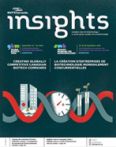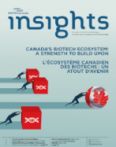Companion Diagnostics: A Guide to Cure?
There is an obsession by biotechs, pharma, investors and payers to pre-select responders to a therapy before they are treated.
How did we end up here and how is this going to impact medicine in the long term? In certain diseases where the biology landscape is understood better, like oncology, there has been tremendous impact. However, in most other target areas we still cannot isolate the responders and use “all comers” to try treatments and hope the safety and efficacy of a drug can be shown to be statistically significant. What happens to target areas where specific responders cannot be identified?
What happens to companies that have an effective treatment but cannot get funding because they cannot find their “targeted population”? By “targeted” we mean a sub-population that expresses a specific genetic mutation or biomarker.
At Novateur we are often approached by creative scientists that have discovered a biomarker diagnostic or in some cases can analyze hundreds of your markers to show that you may potentially have various disorders.
Would the doctors be interested to tell you that you may have early Alzheimer’s when there is no treatment available for it? And would the payers pay for it?
In our experience, diagnostics will have a challenging time getting funded and partnered, unless they can be paired with an effective therapeutic. The ultimate goal is to be able to utilize the diagnostic to change the clinical outcome in a meaningful way. In a similar fashion, biotech companies developing treatments need to think how to incorporate potential diagnostics to pre-select responders.
After decades of experience at large pharma, our advisors believe that unless the diagnostic can change how medicine is practiced or drugs are prescribed, the developers would have a hard time getting reimbursed even after approval.
At my presentation in Biotech Pharma Summit in Porto, Portugal on October 26-27, 2017, I will be going over “The Good, The Bad and The Ugly” examples or the most successful diagnostics and treatments as well as the ones that have disastrously failed, and what we can learn from them. Hope to see you there.



